
Back to All Product Updates
October 2024 Monthly Wrap-Up
Published November 5th, 2024

Harry Balding, PurchasePlus Platform Expert
Welcome
Our Product and Engineering Team worked tirelessly in October to deliver enhancements to our Credit Note, AI Scanning, and Inventory Management functionality for Purchasers using our platform.
Additionally, we have continued to build features for Suppliers to manage their profiles and Catalogs in PurchasePlus, but it is still recommended that Suppliers use our
Legacy platform for the time being.
Please read below to learn about the new features that you can use in
PurchasePlus.
Credit Notes - Create using AI or from a selected Document
Following the
release of the Credit Note Line and Sub-Line functionality last month, there are now two new methods that you can use to rapidly create Credit Notes in PurchasePlus.
1. You can create a Credit Note using AI Scanning via
[Invoices] →
[Credit Notes] in the side navigation bar, and then selecting
[Create a New Credit Note].
Alternatively, you can visit
[Invoices] →
[AI Scanning Inbox] in the side navigation bar, and select
[Create New Scanning Task].
Simply drag and drop the Credit Note PDF into the upload area, and our AI Scanner will create the Credit Note from the Header and Line information that is available:
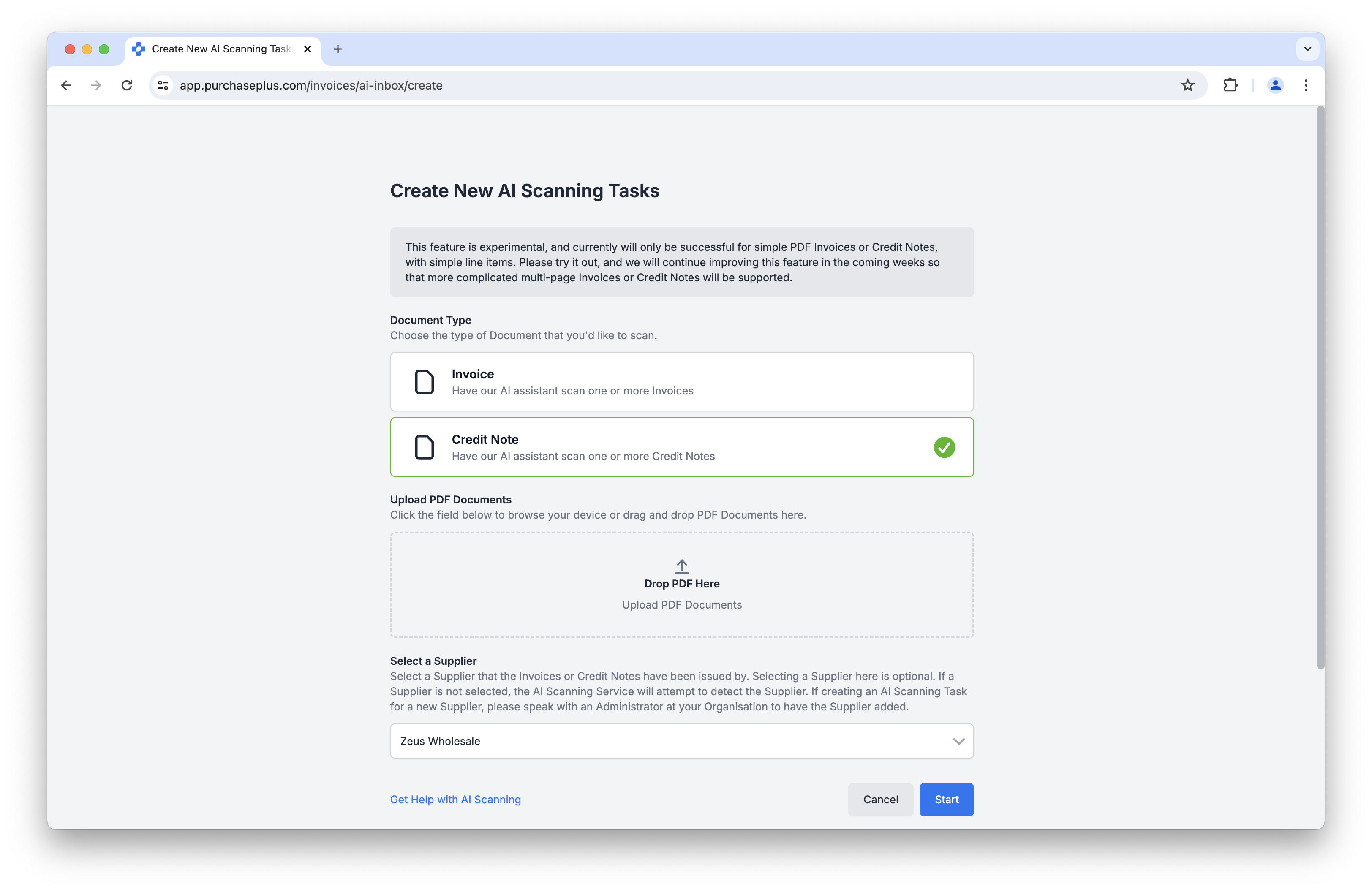
Above: The AI Scanning Inbox includes the ability to drag and drop Credit Note PDF's into an upload area, and automatically ingest the data into PurchasePlus.
2. You can also now create a Credit Note from a selected Invoice, Purchase Order or Goods Receiving Note via [Invoices] → [Credit Notes] in the side navigation bar, and then selecting [Create a New Credit Note].
Select [Create From Document], and then select the desired document using the drop-down fields. Clicking [Create Credit Note] will then create a Credit Note with lines that match the selected document.
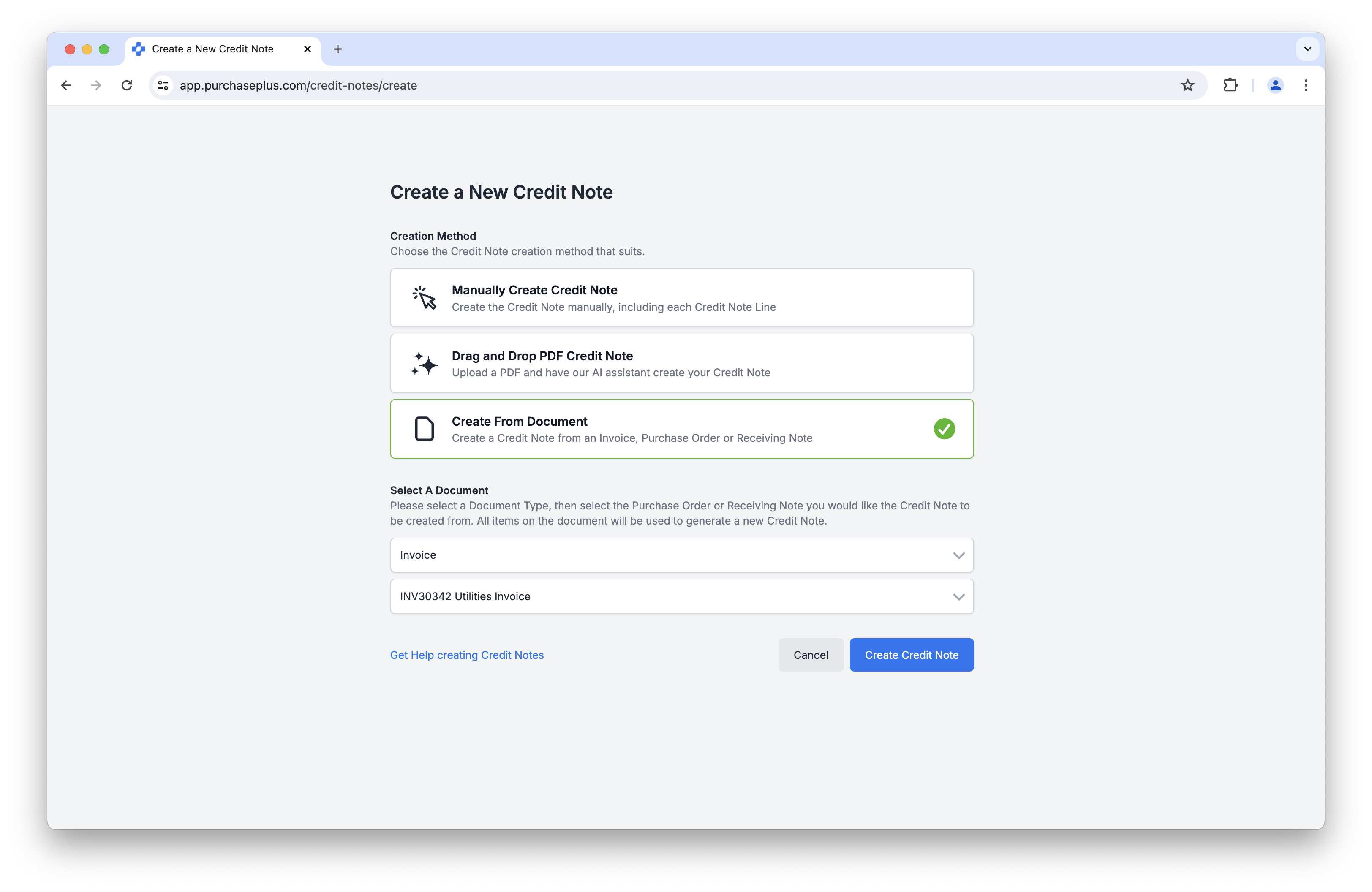
Above: Creating a Credit Note from an existing document is a powerful way to accelerate the creation of Credit Notes in PurchasePlus.
AI Scanning - Automatic Document Processing
When reviewing an AI Scanning Task and clicking [Create Invoice] or [Create Credit Note], the document can now be automatically processed according to your Flag Settings and Thresholds so that it initially appears in a Flagged or Reconciled state (instead of an Open State).
This feature is optional and can be toggled on and off per Purchaser.

Above: Documents created by the AI Scanner can optionally be automatically processed when you click 'Create Invoice' or 'Create Credit Note'.
AI Scanning Inbox Enhancements
There is now a new state of Completed for an AI Scanning Task (rather than the Scanning Task simply disappearing when completed). This status speaks to the fact that the Scanning Task is now read-only - it is no longer editable, as a document has already been born from it.
To complement this new state, we've also added a [Document] column to the AI Scanning Inbox. If the state of the AI Scanning Task is “Completed”, then the link to the P+ Invoice or Credit Note that was born from the Task will appear here.
Additionally, you now have tabs in the AI Scanning Inbox to quickly filter the Scanning Tasks by Status: View All, Scanning, Scanned, Completed and Failed.
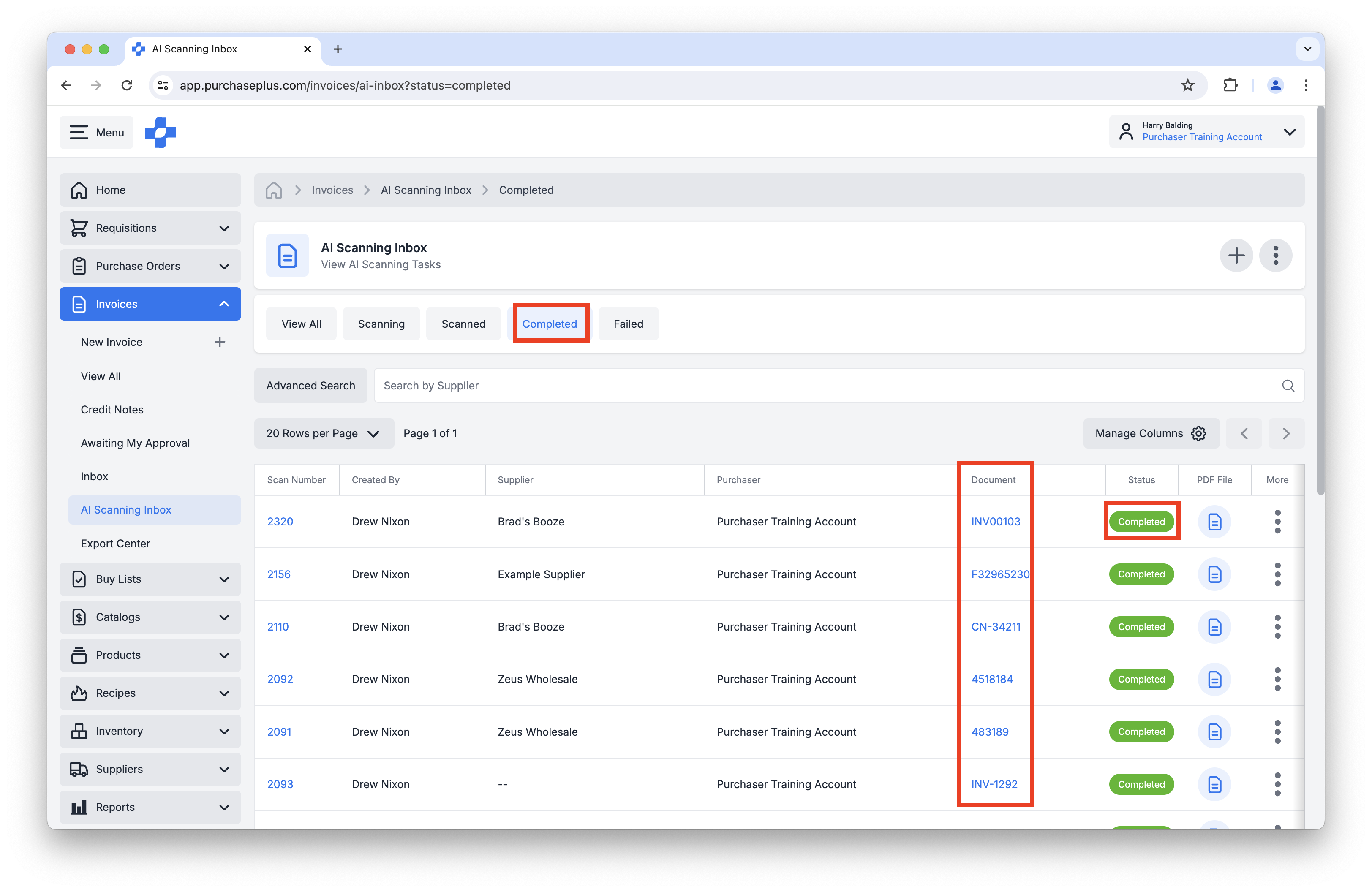
Above: Filtering the AI Scanning Inbox by Status, and the new Document column that displays Invoices or Credit Notes born from the Scanning Task.
Finally, you can now advanced search the AI Scanning Inbox by "Invoices Only" and "Credit Notes Only”:
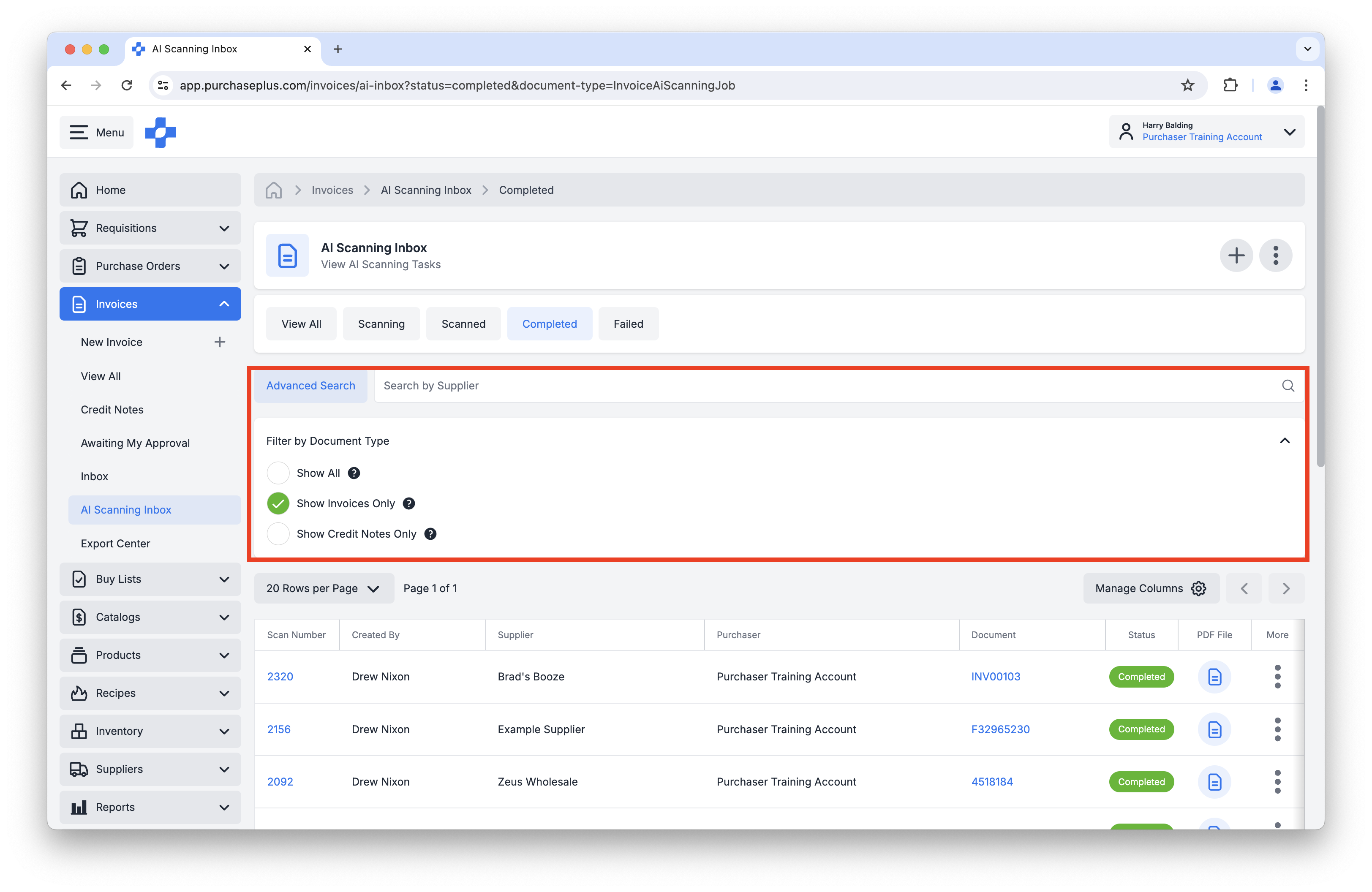
Above: Applying an Advanced Search filter to display only the the selected type of Document.
Supplier Experience
Suppliers logging into (New) PurchasePlus will now be able to:
- Navigate to a new “My Purchasers” option in their side-navigation menu. This page will display a list of the Purchasing Organisations with whom the Supplier has a Trade Relationship - whether it is Enabled or Disabled.
- Click into a “My Purchaser” and view the Catalogs assigned to the Purchaser:
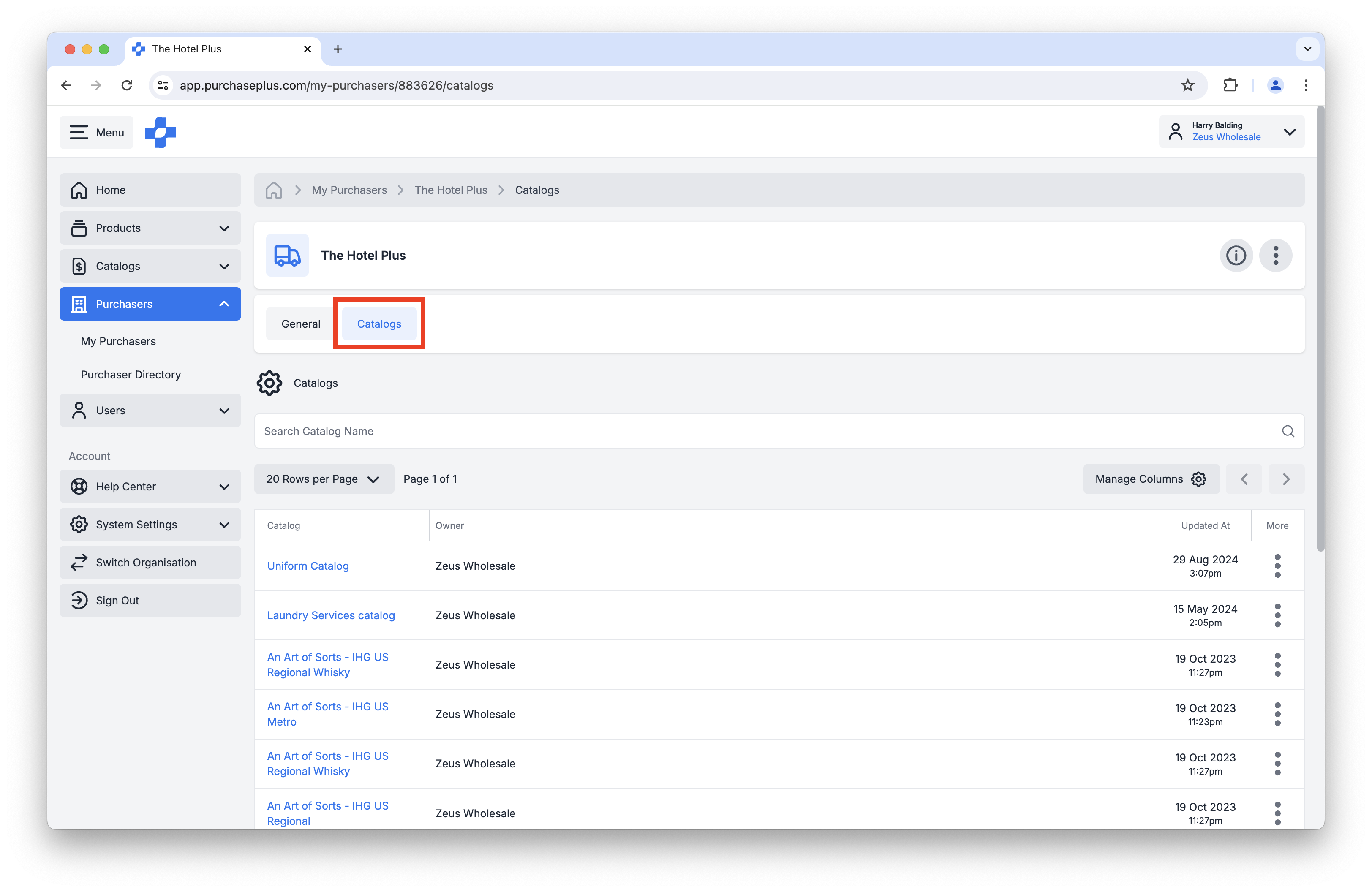
Above: Viewing the Catalogs assigned to a My Purchaser (when signed in as a Supplier)
Furthermore, from the Catalog side of things, Suppliers can now:
- Create a new Catalog and add Products with a Unit Value and Tax %.
- Click the "Purchasers" tab on a Catalog to view Purchasers to whom the Catalog is assigned.
- Assign a Catalog to a Purchaser via the new Purchasers tab on a Catalog. Please note, Suppliers can only assign a Catalog to a Purchaser with whom they have an established Trade Relationship:
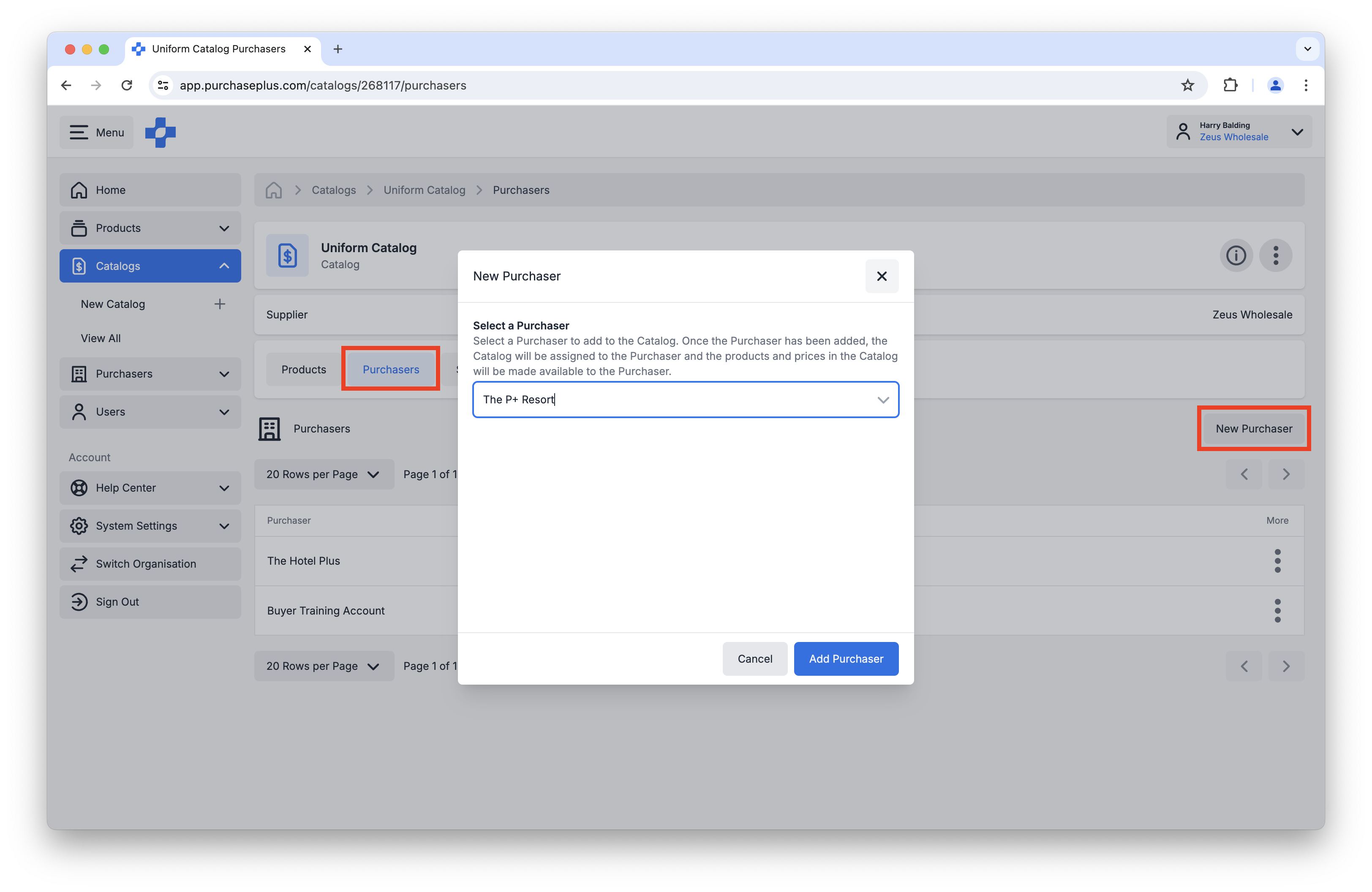
Above: Assigning a Catalog to a New Purchaser via the new Purchasers tab on a Catalog.
Inventory Management Enhancements
The following new features are available to users at Purchasing Organisations where our
Inventory Module is enabled.
Inventory: Requisition from Stock Location
We now offer a new Requisition Type of "Stock Location" and the selected Stock Location acts like a Buy List - i.e., filtering the Products down to only those already held as Stock items in the selected Stock Location.
The Stock Location Requisition shows the user the current Quantity of the Item as well as the PAR Level. This is a very powerful way to replenish the stock levels of a specific Stock Location and ensure that you never run out of important products.
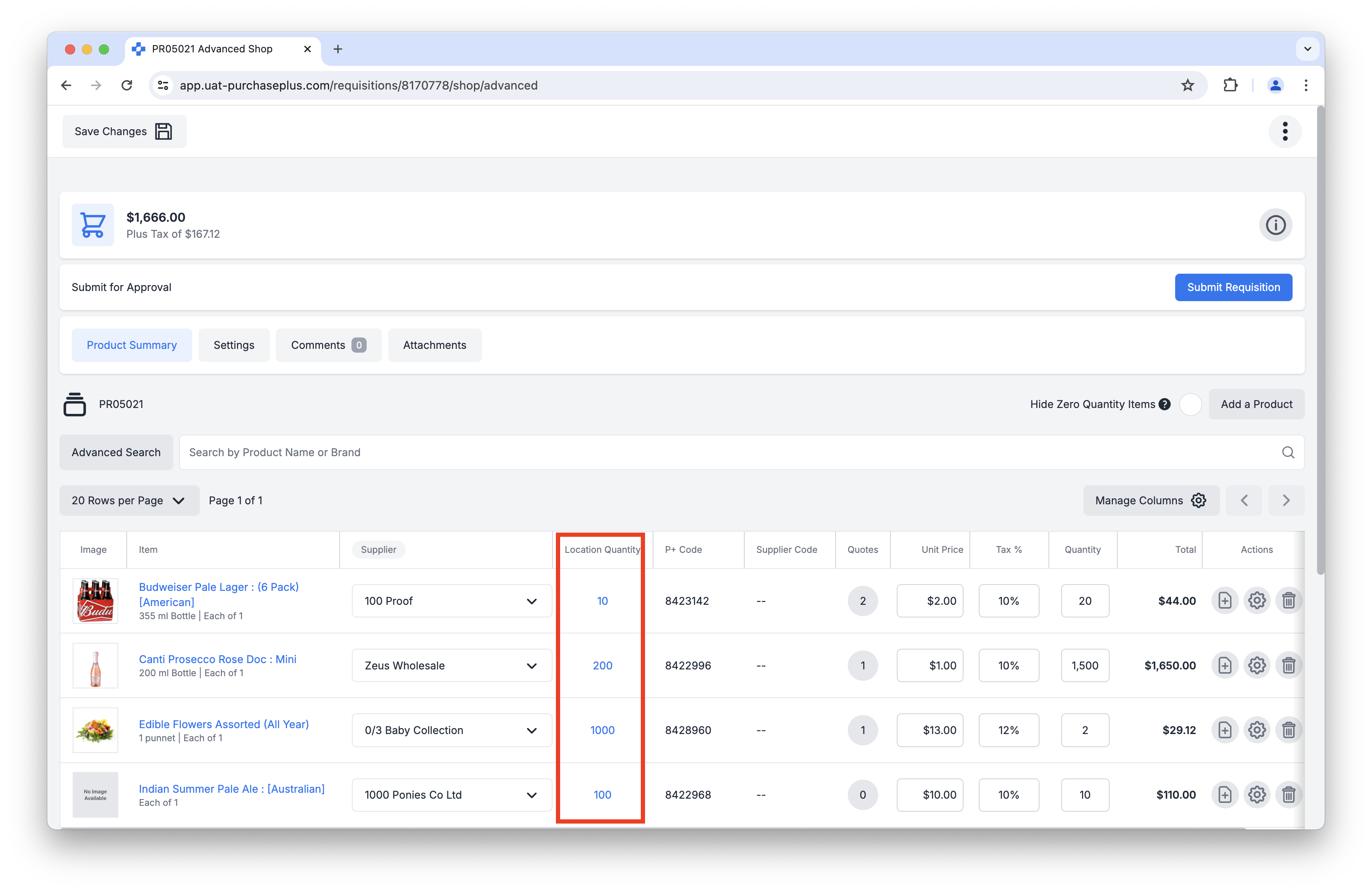
Above: Creating a Requisition from a Stock Location.
Inventory: Stock Item Unit Value Adjustments
Inventory users can now manually adjust the Unit Value of a Stock Item that is being held in a Stock location, in the case of revaluation or to correct errors made while receiving goods.
When in a Stock Location, you can adjust the Unit Value of a Stock Item using the [More] menu's [Edit Unit Value] option:
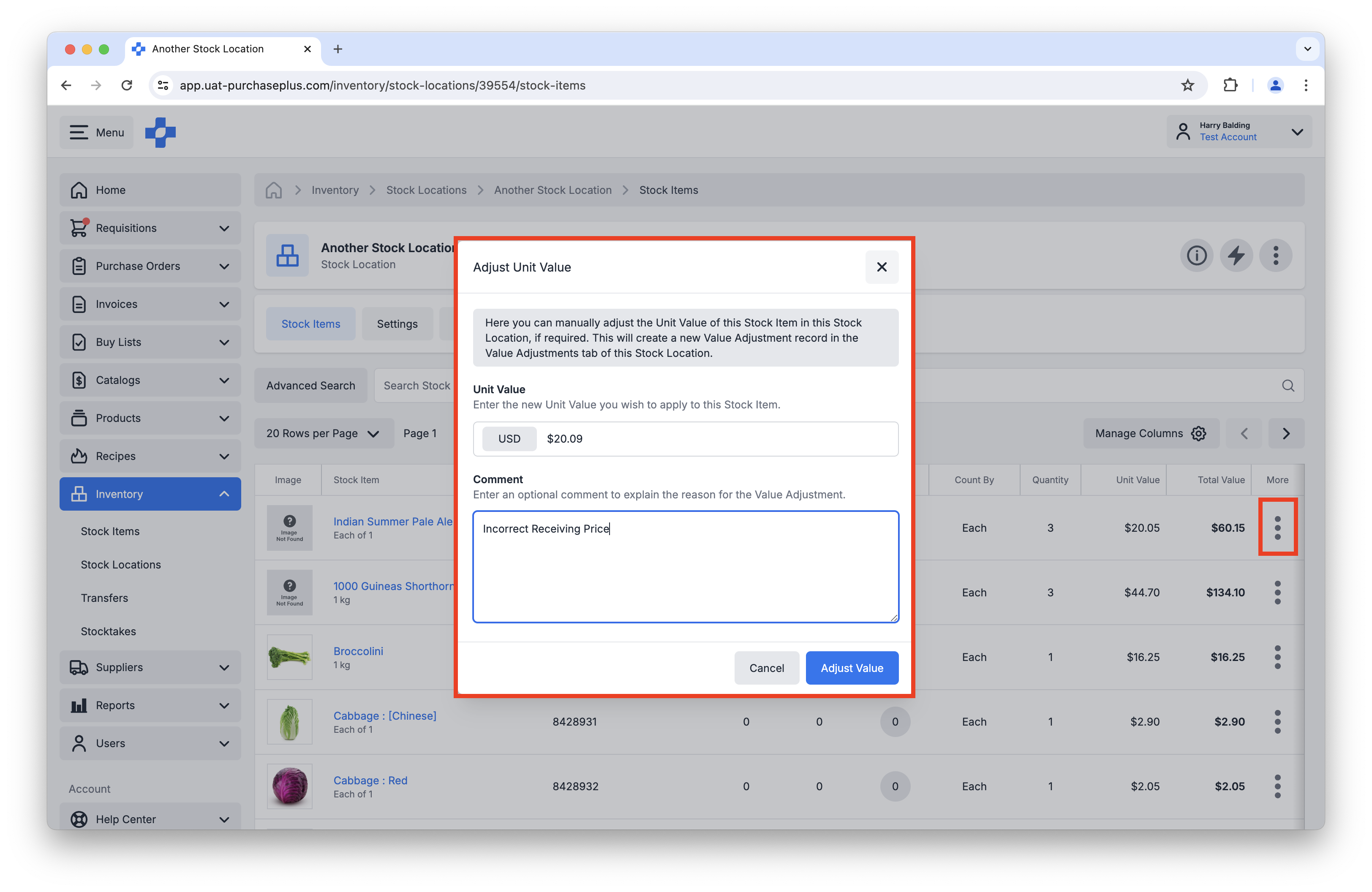
Above: Manually updating the Unit Value of a Stock Item in a Stock Location.
Additionally, we now have a Value Adjustments Tab in a Stock Location, where you can see a list of the Value Adjustments made to the Stock Items held in that Stock Location.
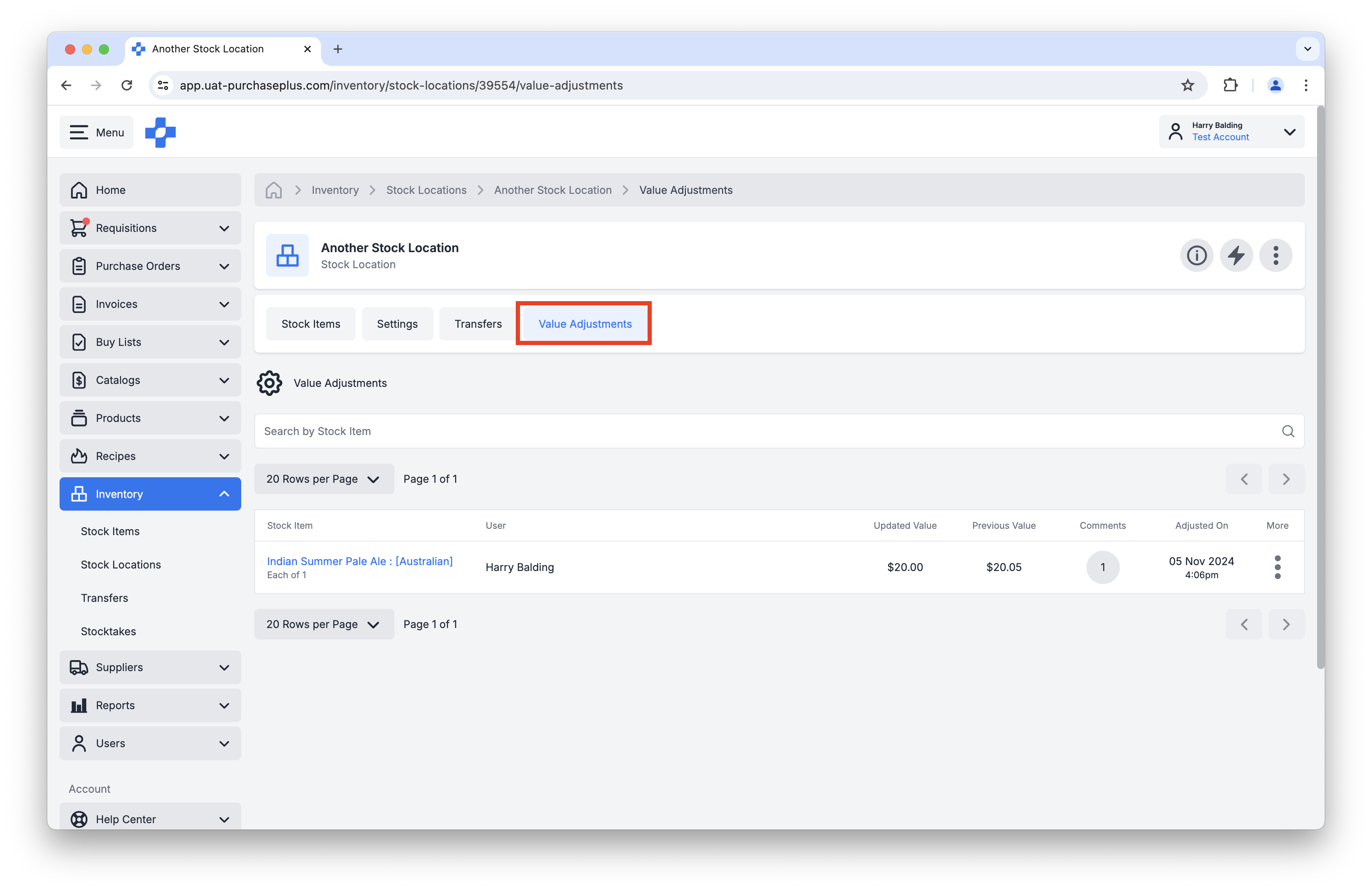
Above: Viewing a list of Value Adjustments to Stock Items in a Stock Location.
Finally, when in a Stock Location, you can view the Quantity and Value History of a single Stock Item using the "More" menu "View History" option:
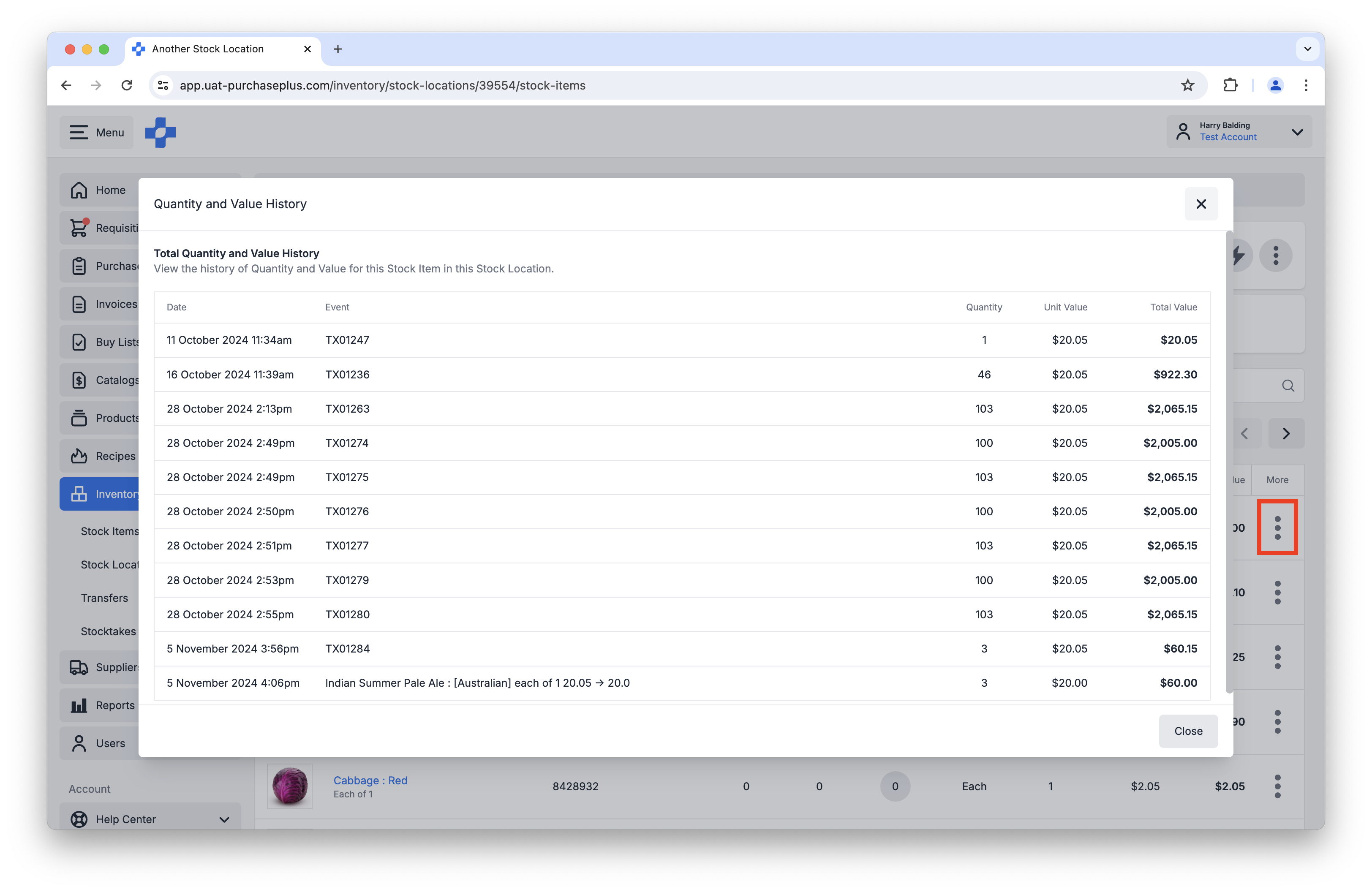
Above: Viewing the Total Quantity and Value History of a Stock Item in a Stock Location.
Inventory: Stock Location Management
There is now a [Clear Zero Quantity Items] option in the header of a Stock Location. Clicking this button will remove the connection between all zero-quantity Stock Items and the Stock Location that you are viewing, and they will no longer appear in the Stock Location.

Above: Clearing zero quantity Stock Items from a Stock Location.
Additionally, you can now “hover to edit” the PAR (Periodic Automatic Replacement) Level and Re-Order Level columns when viewing a Stock Location.
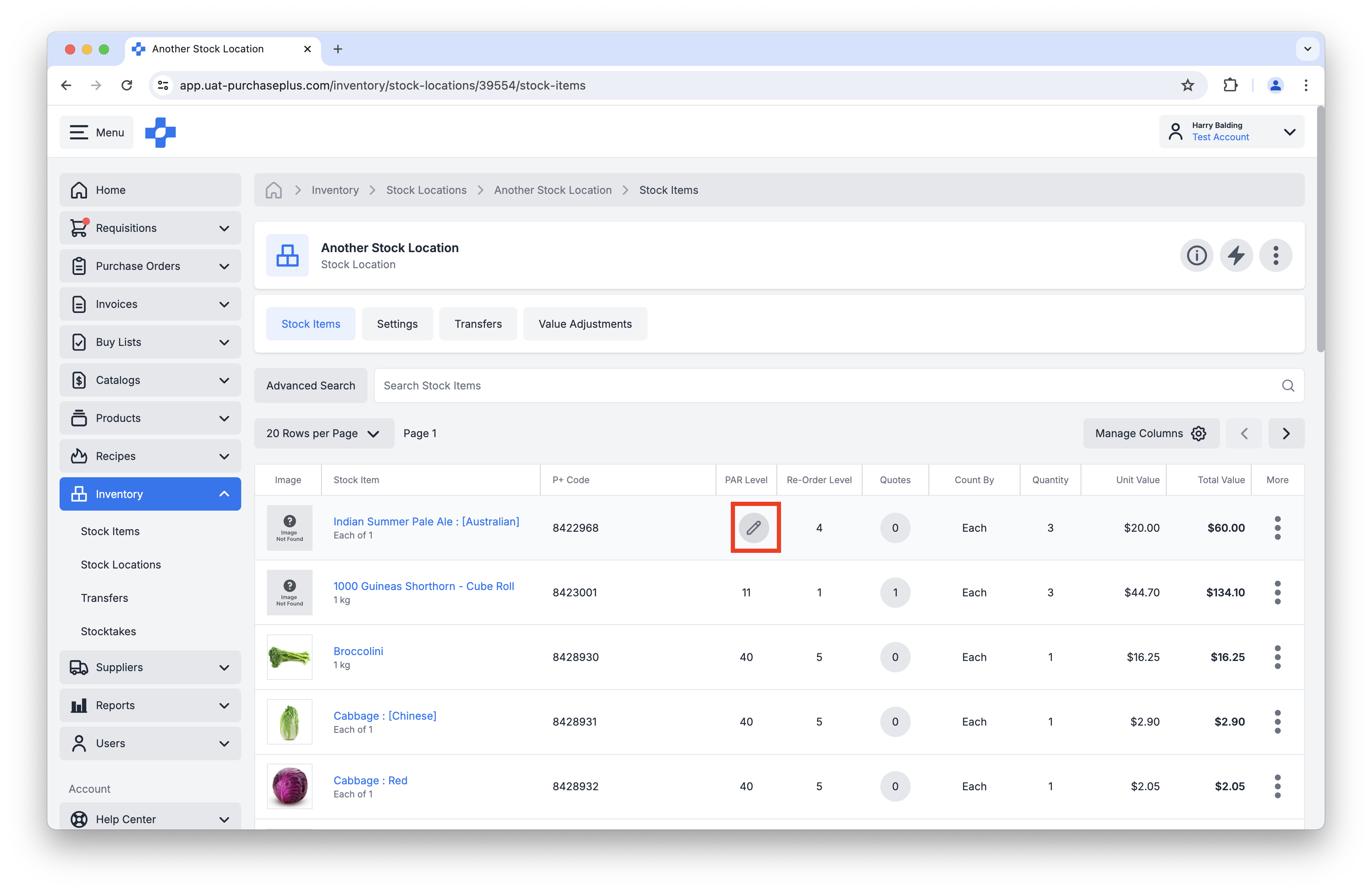
Above: Hover-over the PAR Level and Re-Order Level columns to edit the values.
Inventory: Start All Stocktakes
There is now a “Start All Stocktakes” option in the Start New Stocktake form. This is a powerful time-saving feature for users that manage Stocktakes across multiple Stock Locations.
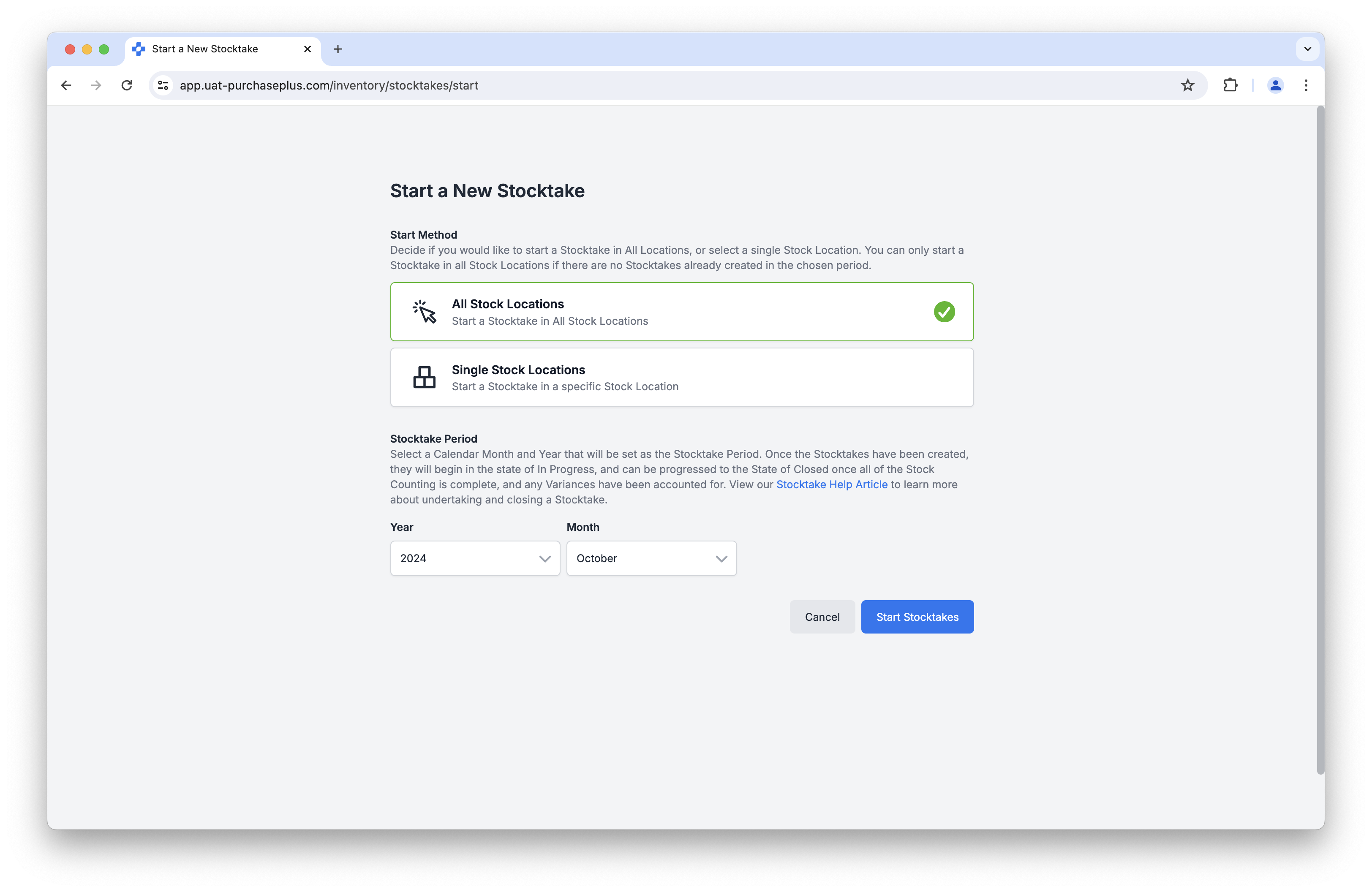
Above: Start a Stocktake across all Stock Locations in your Organisation.
Other Enhancements
- We have added Next and Previous page buttons to all Audit Logs so you can now view more than 20 items.
- We have improved the Match PO to Invoice Modal so that it shows a new column that is a count of the Invoices already matched to the PO:

Above: Start a Stocktake across all Stock Locations in your Organisation.
For any questions, please contact us via email on
help@marketboomer.com or phone us on
+61 2 8215 7133.
























